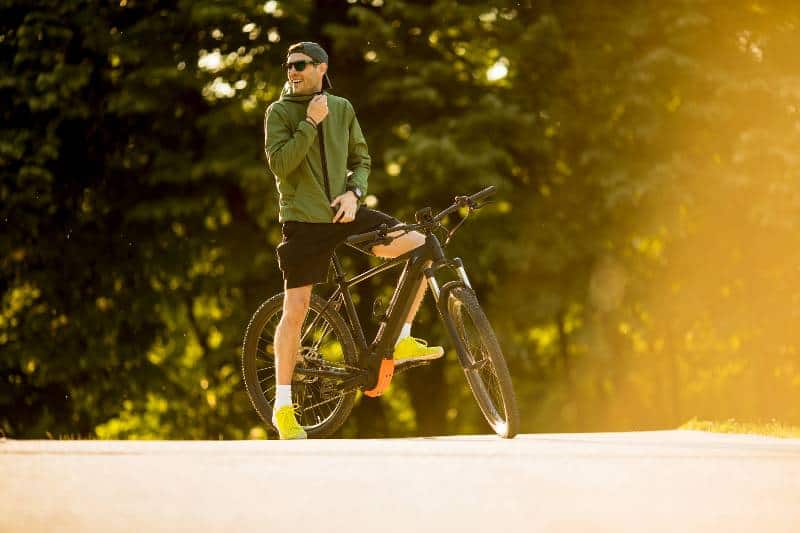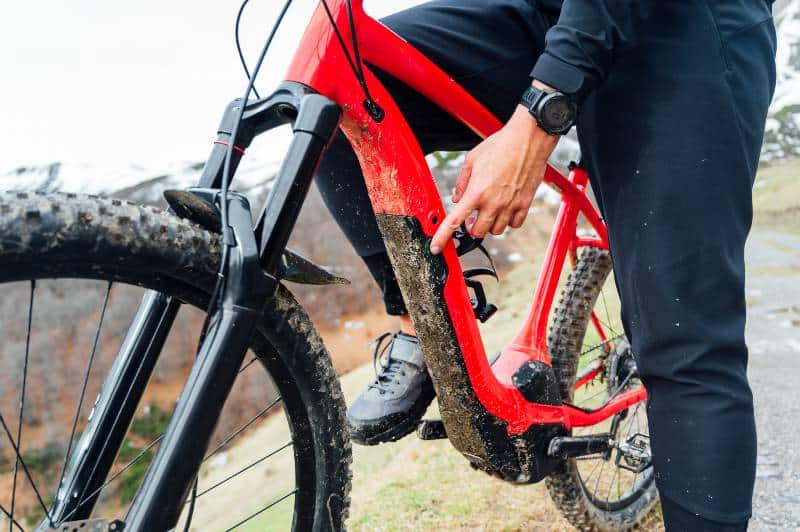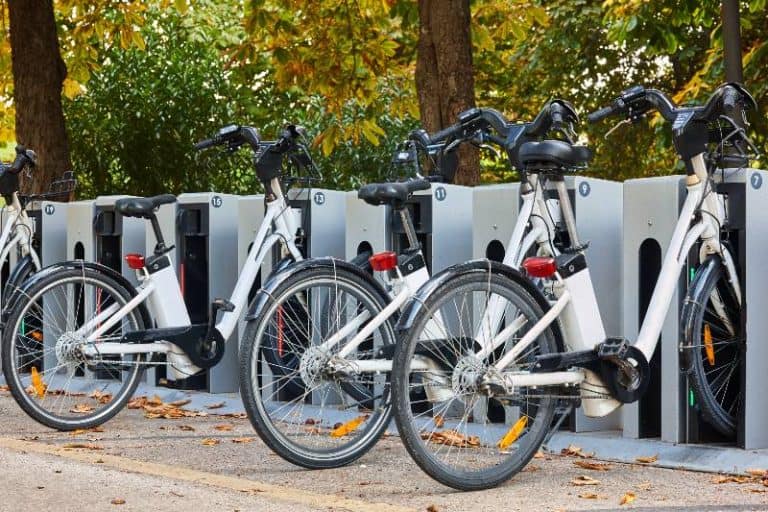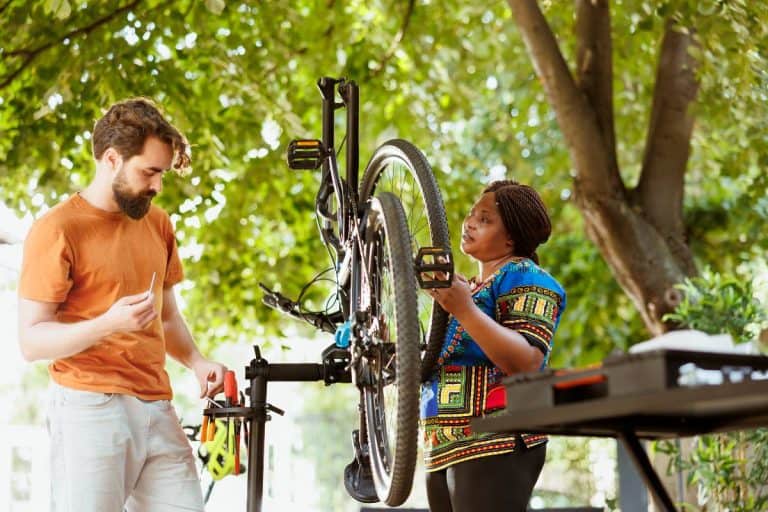The Truth About Ebikes for Mountain Biking
E-bikes, or electric bikes, are the newest addition to mountain biking – and they’ve certainly stirred up some controversy in the biking world. An e-bike is a bicycle with an integrated motor and batteries that assist the rider’s pedaling. They differ from standard mountain bikes in that their motor helps propel the rider forward, making for a much faster and easier ride.
With unique capabilities such as being able to climb steeper trails and take on technical trails with ease, e-bikes are increasingly popular with both novice and experienced mountain bikers alike. But many remain suspicious of these machines, wondering if they actually promote responsible use of public trails or whether they encourage confident riders to move too fast while on them. These questions have yet to be answered – however, one thing is clear: there is no denying that e-bikes have forever changed the way we think about biking.
The benefits of eMTBs are obvious: you can ride more, cover more distance, and fit in more descending in less time!
Key Takeaways
- E-bikes are bicycles with integrated motors and batteries that assist the rider’s pedaling.- E-bikes allow riders to climb steeper trails and take on technical trails with ease.
- Despite some controversy, eMTBs have forever changed the way we think about biking, allowing users to cover more distance in less time.
- However, some riders still prefer traditional mountain biking and the satisfaction of earning their turns. Ultimately, it’s up to each rider to decide what type of biking experience they prefer.

Advantages of e-bikes for mountain biking
Assisted pedaling can make steep climbs easier
An e-bike can be particularly designed for riding up steep hills. It has a motor that provides assistance when pedaling, so the rider doesn’t have to pedal as fast or hard to maintain momentum. This means that the e-bike can help them climb steep hills without losing energy or having to stop and rest more frequently than they would on foot. The motor can help you pedal up hills without losing momentum, which is especially useful when you’re climbing a steep hill.
For example, if you have a long climb ahead and start climbing at a moderate pace, but later find yourself going up a quite steep incline with a mountain e-bike with an electric motor could help take the strain off your legs while you maintain your pace.
Can expand the range of terrain that can be covered
Mountain biking is a sport that requires you to travel through varied terrains. In order to reach these difficult places, you need to be able to move quickly and efficiently. E-bikes for mountain biking are designed to help you achieve this goal by extending your range of terrain.
When you ride an electric bike for mountain biking, it is much easier for you to cover more distance and navigate difficult terrain than when you are on a regular bike. This is because e-bikes allow you to travel at a faster pace than normal bikes as well as climb hills effortlessly.
For instance, if there is a steep hill that needs to be climbed, an e-bike will allow you to do so without having to use extra energy or strain yourself too much.
Can allow for longer rides and more challenging trails
E-bikes for mountain biking allow you to go further and have more fun on the trail than ever before. They can help you get to places that would be quite difficult without them. With e-bikes for mountain biking, you can bike over miles of trails that are not accessible by foot or by car. It’s a great way to get out in nature without having to worry about getting too tired or injuring yourself on rough terrain.
You can also use e-bikes for mountain biking to make your ride more challenging and exciting. This way, you’ll feel like you’re doing something extra special with your time off—like exploring new areas or pushing yourself harder than usual because you know how much fun it is going faster than ever before!
Can make mountain biking more accessible to a wider range of people
Mountain biking is a big sport, and it’s growing. More people are riding bikes for transportation, recreation, and competition. But not everyone can ride on trails and enjoy the freedom of being able to go where they want to go.
E-bikes help make mountain biking more accessible by giving people who haven’t experienced riders the ability to explore new terrain without having to worry about getting injured because you pushed yourself with your bike.
Disadvantages of e-bikes for mountain biking
Can be more expensive than traditional bikes
E-bikes are more expensive than traditional mountain bikes because the technology is newer, more sophisticated, and more expensive to produce.
The cost of a new e-bike is typically higher than that of a new traditional mountain bike because there are more parts to make and more steps involved in designing them. The e-bike market also has fewer players than the traditional market, so it’s harder for companies to develop their own products without investing in research and development costs as well as manufacturing equipment necessary to produce them.
E-bikes also have an unexpectedly high upfront cost—most people don’t realize that they need replacement batteries and chargers every few years or so. You can save money by buying used batteries and chargers from other riders who no longer need them, but those are usually refurbished rather than brand new (and therefore less reliable).
Can be heavier and less agile than traditional bikes
E-bikes for mountain biking are often heavier and less agile than traditional bikes. This is due to the weight difference between the two types of bikes. The weight of an e-bike is more than that of a regular bike because it has batteries and motors which add extra weight.
Some argue that e-bikes take away from the “purity” of mountain biking
The argument that e-bikes take away from the “purity” of mountain biking has been around for a while, but with the rise in popularity of mechanical assist bikes and electric mountain bikes, it’s never been more relevant.
There are a few reasons why this argument is so prevalent.
First, there’s the fact that e-bikes are often seen as an upgrade over traditional bicycles. Another reason is there’s the misconception that because they’re powered by batteries rather than by human power alone, they don’t require any specific skill to operate — even though this is simply not true.
Some trails and parks may not allow e-bikes
If you want to ride an e-bike on a trail or park, it’s best to check with the management first to see if it’s allowed. Many trail systems have a specific policy about using e-bikes on their facilities, so you should check with the management before heading out for a ride.
Most trail systems will not allow e-bikes because they can damage the trail surface, especially if they aren’t used properly. E-bikes typically have wider tires and heavy batteries that cause damage when they roll over rocks or roots in the ground.
Environmental implications of Mountain E-Bikes
Creates less pollution
The issue of pollution is one of the biggest concerns for mountain bikers. Not only is it bad for the environment, but it also affects our health. E-bikes are a great way to get around without using up all those precious fossil fuels. They are powered by electric motors that generate electricity from the friction between the chain and the pedals. These motors reduce emissions when compared to traditional motorbikes because they don’t require any fuel to run them, unlike motorcycles.
Releases less C02
E-bikes for mountain biking release less CO2 than regular bikes because they operate at a lower power output. This means that the carbon emissions from the production of the bike are less, and the carbon emissions from transportation are also less.
Top Reasons You Should Consider Getting a Mountain E-Bike
Mountain E-Bike lets me concentrate on my skills
One of the things that I love most about mountain e-bikes is that they let me focus on my skills. It’s easy to get distracted when you are riding a regular bike because you have to pay attention to so many different things, like pedalling all the time.
Mountain E-Bikes are a very time-efficient way to travel
Mountain E-Bikes are a very time-efficient way to travel. You can get to your destination quickly, but with a lot less stress than if you were driving or taking public transit. The smooth ride is great for people who don’t want to worry about traffic jams or train delays.
Mountain E-Bikes are also easy to use and maintain. You don’t need much training to learn how to use one, and the fact that there’s no engine means that there’s no oil or gas needed for maintenance purposes.
They’re also good for the environment because they’re electric, so they don’t contribute as much pollution as other modes of transport do.
Mountain E-Bike can help you be healthier
Mountain E-Bikes are a great way to get in shape, and they’re also a fun way to spend time with your friends. One of the best things about mountain bikes is that they give you an opportunity to move around outside while having a great time. Whether you’re going on a hike or just riding around your neighborhood, mountain bikes are a great way to stay active and have fun at the same time.
Mountain E-Bike can save you money over cars
If you choose an e-bike over a car, you will save money on gas and on the maintenance of the automobile. To give you an idea, the annual cost of parts for an electric bicycle might range anywhere from $100 to $150. That number jumps to roughly $300 per year if you take your motorcycle to the dealer for seasonal tune-ups, which is the most expensive option.
Learn here why e-bikes are much a great alternative to cars in terms of environmental friendliness and cost.
Top 3 Mountain E-Bikes we Recommend
1. Whyte E-160 RSX
Since their release, Whyte’s electric mountain bikes have garnered accolades from us as well as many other publications and websites. During our testing, we discovered that the E-160 RSX is an excellent illustration of why these bikes are so successful.
At first glance, the E-160 RSX appears to be quite similar to its ancestor, the Whyte E-150 series; nevertheless, the frame of the E-160 RSX is actually much different. This was achieved by applying the lessons learned from the Whyte E-150 series. It has been strengthened in all the necessary sections, and the downtube has been updated to include a sliding rail to make the removal of the battery simpler. In addition, the frame features a ton of weatherproofing details all over it.
2. Merida eONE-SIXTY 9000
Even though the eONE-SIXTY is marketed as an enduro bike and unquestionably possesses the travel and clout to back it up, we found that we had the most fun exploring areas and zones that we normally wouldn’t explore on a regular bike. This was the case despite the fact that the eONE-SIXTY is marketed as an enduro bike. Merida has built an adaptable utility into the eONE-SIXTY, and if you simply charge down a double black path, you will miss out on that utility.
Other than that, the determined climbing ability of the eONE-SIXTY allows accessing otherwise inaccessible areas conceivable, turning exploration into an enjoyable activity rather than a burden. If the trail back down is flowing singletrack or littered with technical features, having capable suspension and grounded geometry figures means that you are aboard a bike that can not only handle almost any track with composure but also encourages playful riding in order to wring as much fun as possible from the returning descent. This is because the bike can handle almost any track with composure.
3. Santa Cruz Heckler MX XO1 AXS RSV
The most recent iteration of the Heckler has a larger interchangeable battery (720 wh, up from 504 wh), which enables riders to expand their own trail map by gaining access to trails that were previously inaccessible, unlocking trails that are less frequently used, and packing more into a shorter amount of time.
The new Heckler comes with wheel size options that include either mixed or dual 29 inches. Riders have options beyond just the size of their wheels. Both come in a complete size range from medium to XXL, with the small size frame having dual 27.5-inch wheels. The range of alternatives for construction kits is expanded thanks to Santa Cruz’s own C and CC blends of carbon, which come in two different degrees.
The manner in which the bike behaves while riding on trails is one of the aspects that sets our electric bicycles different from the competition. We put a lot of effort into the carbon layup and frame design to ensure that it is durable enough to withstand the enormous amount of riding that ebikes make possible. Because there are no shortcuts taken in the componentry, your first concern should be avoiding becoming disoriented rather than being stranded with a mechanical device.
The geometry has been fine-tuned as a result of a significant amount of testing and feedback in order to ensure that the ride is enjoyable in either direction. And last but not least, the illustrious VPP suspension has been fine-tuned specifically for the use of an ebike.
150 millimeters of rear travel (together with 160 millimeters of travel for the fork up front) seems to be the sweet spot for a bike that is intended to conquer huge trails on big days, with slightly less anti-squat to give it traction like glue on the climbs you’ll be challenging yourself on.
Are Ebikes Good For Mountain Biking FAQs
Are eBikes good on steep hills
To put it briefly, yes. There is no surface or slope that an electric bike can’t conquer. Even better is a bike equipped with a mid-drive engine, which is great for quickly conquering inclines.
Should e-bikes be allowed on trails?
There are several good reasons why electric bikes should be allowed on mountain bike trails. Having access to more bikes, especially those with pedal assistance, improves people’s well-being and health. Moreover, e-bikes have the potential to attract a broader audience to the sport. It’s possible that some people who normally couldn’t get in would do so unexpectedly. Many riders are seniors or less physically capable people who otherwise wouldn’t get out on a bike.
Pedaling still takes serious effort, to say the least. Because electric-assist bicycles don’t pedal forward on their own, riding them is a genuine sport. On the other hand, there are a number of reasons why some people are adamant about not letting e-bikes ride on the same routes as traditional mountain bikes. Here is a rundown of the most common arguments against bringing electric bikes onto mountain biking courses.
1. Due to the quickness
Bicyclists on the mountain typically maintain a steady pace. Everyone is cycling at roughly the same rate; however, some are faster than others and some are having difficulty keeping up. E-bikers have altered the climbing and descending strategies of traditional riders. Because they can maintain a high rate of speed even when climbing steep grades, they have become incompatible with other trail users and may even pose a threat to them.
The rush that comes from riding an e-bike quickly might become addicting, leading to increased risky behavior. Longer stopping distances caused by the increased speed increase the likelihood of collisions.
When pedaling alone, it also requires a great deal of time and effort to get into shape to ride quickly. You’ll gain a gradual understanding of bike control in this way. At the end of the day, you’ve shown yourself an expert navigator of a technically challenging and erratic landscape. Motorizing a bike just benefits the idiots who already ride in an unsafe manner by allowing them to travel greater distances.
2. Controversy about trail use
Taking motorbikes into the forest is like bringing motorbikes into a zoo, and it doesn’t do mountain bikers any favors. It required a lot of work to get other trail users, like hikers and horseback riders, to accept bikers and let them use the routes alongside them. Increases in the speed of e-mountain bikes could spell disaster for trail access in several areas.
It’s true that resolving disagreements over trail use is challenging, and it’s also true that inexperienced riders on machines with more power than they can handle aren’t likely to help the discussion. Many new riders may not know or observe the latest trail etiquette and rules, thus complicating the situation.
Do eBikes damage trails
In 2015, IMBA conducted a study with a limited scope and came to the conclusion that traditional mountain bikes and other trail users are not anticipated to have any more of an impact than Class 1 electric mountain bikes.
Can you go uphill on an electric bike without pedaling
While there are restrictions prohibiting you from riding an electric bicycle without using any pedal force, you are free to reduce the amount of effort you put into pedaling while you are out on the road. Because of the motor, you can get an extra surge of power when you’re going uphill, or you can let the bike do the work for you if you’re starting to feel a little bit fatigued.
How long does an electric mountain bike last
You should have the same level of expectations for the lifespan of an electric bike as you would have for a traditional bicycle if it is properly maintained and cared for. If you take reasonable care of it and don’t leave it out in the rain, you should have it for at least ten years.
Conclusion
Ultimately, whether or not an e-bike is right for mountain biking comes down to personal preference. If you’re someone who likes a challenge and enjoys pedaling up hills, then an e-bike might not be the best option for you. However, if you’re looking for a way to reduce your carbon footprint or want to enjoy longer rides with less effort, then an e-bike could be perfect for you.
It’s important to consider the regulations of different trails before using an e-bike – some places may not allow them at all. And finally, when it comes to giving money as a gift, it’s always best to be thoughtful and mindful about what the recipient might need or want.






